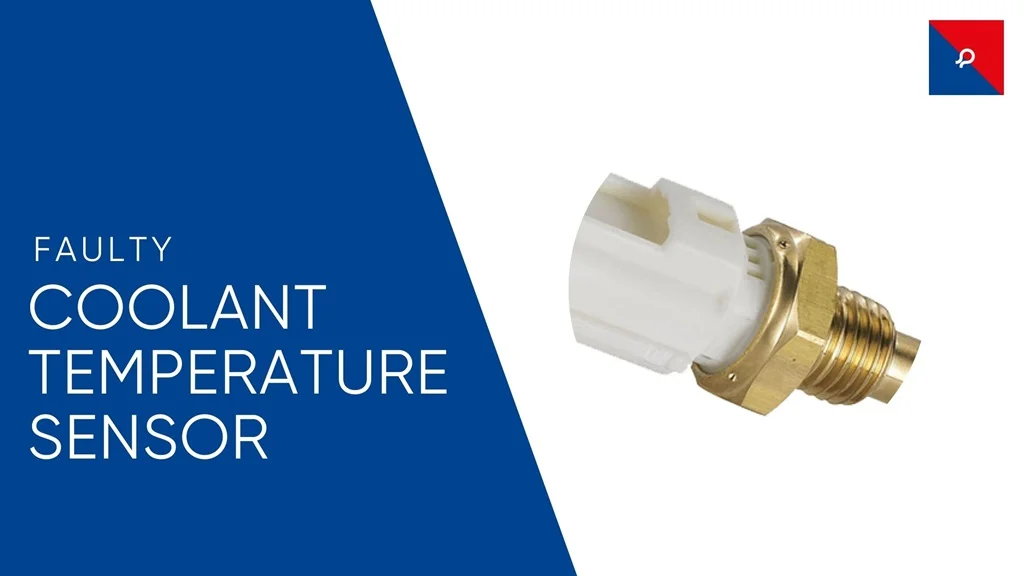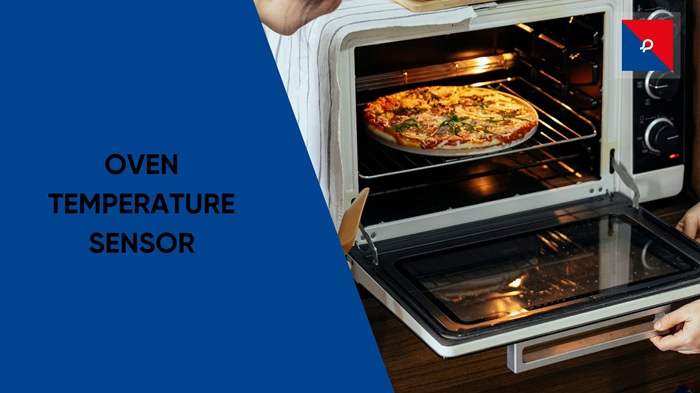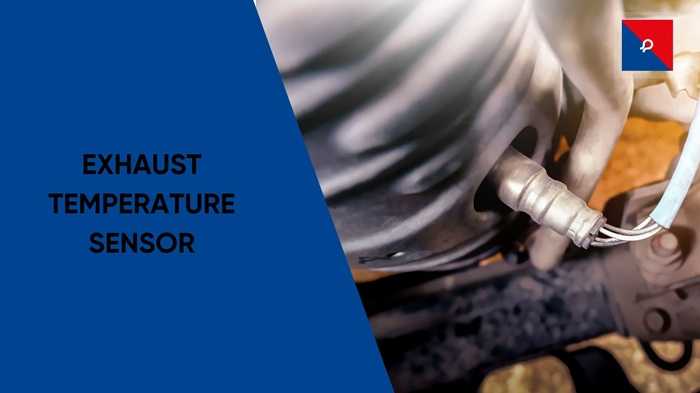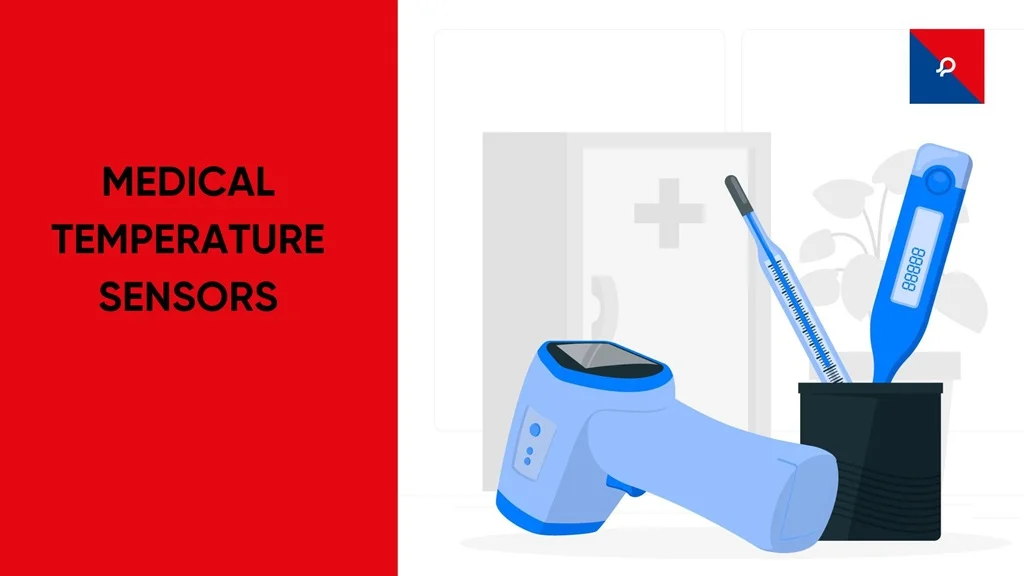
You find yourself driving comfortably before your car provides an unexpected dramatic reading on its temperature display. Your engine life becomes endangered when it heats up and simultaneously the air conditioner fails to operate properly. Your car experiences varying coolant temperatures because your coolant temperature sensor could be damaged.
The coolant temperature sensor (CTS) functions as your car's engine performance controller so a failure in this system leads to many operational difficulties. This guide covers coolant temperature sensor warning signs together with AC's relationship to this sensor and provides replacement guidance for this essential component.
What is a Coolant Temperature Sensor?
Let us begin our examination of symptoms but first, we will look at the coolant temperature sensor’s core functionality.
The coolant temperature sensor (CTS) retains engine coolant temperature measurements while sending them to the engine control unit (ECU). Based on its sensor readings the ECU uses several controls to trim fuel mixture amounts while modifying ignition timing and managing cooling fan operations for optimal engine operation.
A faulty coolant temperature sensor can confuse your vehicle's engine about temperature conditions so it may believe either the engine is extremely cold or extremely hot.
Common Coolant Temperature Sensor Symptoms
If your CTS is failing, your car will give you warning signs. Here are the most common symptoms:
1. Erratic Temperature Readings on the Gauge
Is your temperature gauge operating like a chorus line dancer at a dance event? Intense fluctuations in the temperature gauge frequently indicate a malfunctioning coolant temperature sensor. Fair engine temperature readings fail to reach the sensor so your gauge displays inaccurate temperatures which complicate your overheating detection attempts.
2. Overheating Engine
Failure of the coolant temperature sensor leads to inactive cooling fans that cause your engine to overheat. Extended periods of overheating produce critical situations that may destroy your engine through various faults up to total failure. Pull over quickly and immediately inspect your engine after you observe rapid temperature increases in your car because your engine needs assistance.
3. Poor Fuel Efficiency
The amount of fuel that goes to your engine depends on the information your ECU receives from the coolant temperature sensor. If a sensor fails the engine may incorrectly detect lower temperatures which results in higher fuel usage. Notice your gas tank filling up more quickly without driving longer distances and the CTS from your car could be the culprit.
4. Black Smoke from the Exhaust
When you notice thick black smoke emerging from a vehicle's exhaust pipe have you ever wondered what is causing it? When vehicles emit dark smoke it is usually because they use an excessive amount of fuel through the rich mixture during combustion. When a coolant temperature sensor fails to provide accurate information to the ECU it causes the engine control unit to overestimate fuel needs resulting in excess fuel burning and dark exhaust emission.
5. Rough Idling and Engine Performance Issues
When your vehicle shakes during stopped traffic or experiences poor acceleration your engine may experience incorrect fuel mixture control as the coolant temperature sensor fails to deliver proper data. The sensor error leads to engine issues which cause problems with driving safety including rough idling and stalling slow acceleration and driving difficulty.
6. Check Engine Light Turns On
Irregular sensor readings from the coolant temperature sensor typically activate Check Engine Light alerts recorded by the ECU. Diagnostic technology can pinpoint the issue behind a check engine warning by showing the CTS as the root problem.
7. Cooling Fans Running Constantly
Your cooling fans will keep running despite engine coolness when the CTS provides false overheating signals to the ECU. Your battery life shortens and excess strain appears throughout your cooling system when this problem exists.
8. AC Performance Issues (Does a Coolant Temperature Sensor Affect AC?)
The malfunctioning of a coolant temperature sensor will create problems with your AC operation. Your vehicle's ECU uses an overheating engine detection system to force the air conditioning control systems to shut off. Your CTS sends incorrect engine temperature signals that can trigger AC malfunctions together with weak cooling capabilities when it fails. AC problems can stem from what you initially think about as a compressor fault because the defective coolant temperature sensor deserves investigation first.
How to Diagnose a Faulty Coolant Temperature Sensor
If you suspect your coolant temperature sensor is failing, here’s how you can diagnose it:
- Use an OBD-II Scanner: A quick way to check if your CTS is faulty is by using an OBD-II scanner. Plug it into your car’s diagnostic port, and it will display trouble codes related to the coolant temperature sensor.
- Check the Temperature Gauge: Start your car and monitor the temperature gauge. If it fluctuates wildly, stays cold for too long, or maxes out suddenly, your sensor may be faulty.
- Inspect the Sensor and Wiring: A loose connection or corroded wiring can also cause temperature sensor issues. Check the sensor and its wiring harness for visible damage.
- Test the Sensor with a Multimeter: If you’re comfortable with DIY car repairs, use a multimeter to check the resistance of the sensor at different temperatures. If the readings don’t match the manufacturer’s specifications, it’s time for a replacement.
Can You Drive with a Bad Coolant Temperature Sensor Symptom?
Technically, yes. You can drive with a faulty CTS, but it’s not a good idea. The engine might run too rich or too lean, causing performance issues, overheating, and increased fuel consumption. In the worst-case scenario, an overheating engine can leave you stranded on the side of the road with smoke coming from under the hood.
If you notice coolant temperature sensor symptoms, it’s best to get it checked and replaced as soon as possible.
How to Fix a Bad Coolant Temperature Sensor
The good news? Replacing a coolant temperature sensor is usually straightforward and affordable.
- Locate the Sensor: The CTS is usually found near the thermostat housing or on the cylinder head. Refer to your car’s manual for the exact location.
- Drain Some Coolant: To avoid leaks, drain some coolant from the radiator before removing the sensor.
- Remove the Faulty Sensor: Use a wrench to unscrew the sensor. Be careful, if the engine is hot, it might be scalding.
- Install the New Sensor: Screw in the new sensor, reconnect the wiring harness, and refill the coolant if needed.
- Test the System: Start your car, check the temperature gauge, and scan for any error codes. If everything looks good, you’re done!
JR Sensors: Precision and Reliability in Automotive Technology
JR Sensors establishes itself as a reliable choice among automotive industries because it produces superior temperature sensors that help maintain peak vehicle performance. JR Sensors offers a Coolant Temperature Sensor which monitors engine temperature, ensures efficient operation, and reduces overheating risks. JR Sensors produces purpose-built durability solutions that match contemporary automotive requirements through precise sensor designs that ensure dependable accuracy measurements for modern vehicles. JR Sensors remains the benchmark provider of automotive innovation by delivering temperature sensor solutions for diagnosis and performance enhancement needs.
Final Thoughts
The misuse of a defective coolant temperature sensor leads to major system failures that impact overheating, diminish fuel economy, and cause engine misfires and disruption in air conditioning operation. Check any present coolant temperature sensor signals because they indicate an underlying problem that will cost you expensive repairs unless you fix it first.
When your air conditioning system turns off suddenly you should never blame the refrigerant unless you verify it is a different problem. The strange signals coming from your engine could be generated by faulty coolant temperature sensor symptoms.
Frequently Asked Questions
1. What are the common symptoms of a faulty coolant temperature sensor?
2. Does a coolant temperature sensor affect AC performance?
3. Can I drive with a bad coolant temperature sensor?
4. How do I diagnose bad coolant temperature sensor symptoms?

Burnt Biscuits? Blame the Sensor – The Hot Truth About Your Oven’s Temperature Troubles
If your oven’s cooking like it’s got a mind of its own, your temperature sensor might be the silent saboteur. From half-baked casseroles to scorched cookies, we break down how this little sensor works, why it matters, and how to fix it—without losing your cool (or your dinner). A fun, practical guide that’s just as useful as it is digestible.

Hot Stuff: Why Your Engine Can’t Live Without an Exhaust Temperature Sensor
Think exhaust sensors are just another car part? Think again. These tiny guardians track fiery exhaust temps, protect turbos, keep emissions in check—and even help you pass that dreaded test. Dive into the witty, down-to-earth guide on how EGT sensors silently save your engine (and your wallet) every day. Bonus: You’ll sound like a car guru by the end.

Tiny Tech, Big Impact: Inside the World of Medical Temperature Sensors
Discover how medical temperature sensors work, why they're crucial in healthcare, and how health sensors are transforming modern medical diagnostics. From wearable tech to high-precision devices, learn about the different types of temperature sensor medical devices used today.